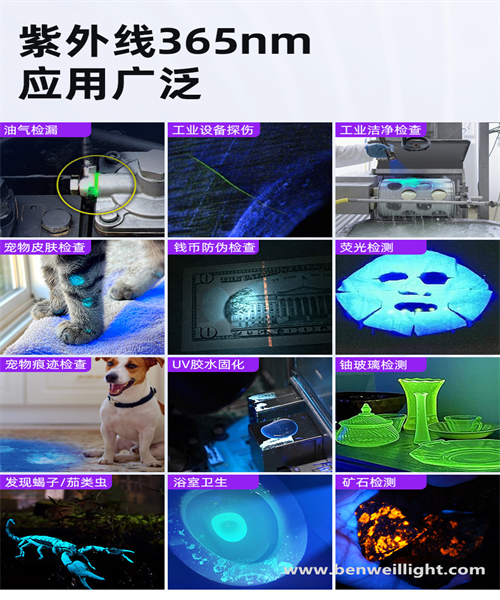The Mighty Beam: Unveiling the Versatile Applications of Handheld UV Curing Lamps
In the realm of modern technology and manufacturing, few tools embody the principle of "precision and portability" as effectively as the handheld UV curing lamp. Once a niche device, it has evolved into an indispensable instrument across a stunning array of industries. Its fundamental purpose is simple yet powerful: to emit concentrated ultraviolet light to rapidly cure or harden light-sensitive materials, primarily resins and adhesives. This simple action unlocks a world of efficiency, strength, and creativity. The applications of handheld UV curing lamps are vast, spanning industrial manufacturing, electronics, medical and dental care, 3D printing, and even the arts.
1. Industrial Manufacturing and Repair
In industrial settings, speed and reliability are paramount. Handheld UV lamps are extensively used for curing adhesives and sealants in product assembly. Unlike traditional adhesives that require hours to set, UV-curable formulas achieve a full bond in seconds upon exposure to the correct wavelength of UV light. This allows for immediate handling and testing of components, drastically accelerating production lines. They are perfect for bonding glass, plastics, and metals in everything from automotive parts (e.g., headlights, sensors) to consumer goods. Furthermore, their portability makes them ideal for on-site repairs and maintenance, enabling technicians to fix cracks, seal seams, or secure components without disassembling entire structures, saving significant time and cost.
2. Electronics and Optoelectronics
The delicate world of electronics demands precision and minimal thermal stress. UV curing lamps excel here by providing a "cold" cure process that doesn't damage sensitive components. They are crucial for:
Potting and Encapsulation: Protecting fragile circuits, chips, and sensors from moisture, dust, and vibration by curing a protective resin coating.
Conformal Coatings: Applying and curing thin, protective layers over printed circuit boards (PCBs).
Fiber Optics: Splicing and terminating fiber optic cables requires a clear, strong bond that does not impede light transmission; UV-curable adhesives are the standard solution.
Display Assembly: Used in the manufacturing of smartphones, TVs, and other displays to bond layers together quickly and uniformly.
3. Medical and Dental Applications
The medical field leverages UV curing technology for its ability to create strong, biocompatible, and sterile bonds. In dentistry, its use is ubiquitous. Handheld UV lights are the key tool for curing tooth-colored composite resins used in fillings, sealants, and crown cementation. The dentist can sculpt the material perfectly and then cure it instantly, ensuring a durable and aesthetically pleasing result. In the broader medical device industry, these lamps are used to assemble devices like catheters, blood filters, and oxygenators where medical-grade UV adhesives are required to ensure safety and reliability.
4. 3D Printing and Prototyping
The rise of resin-based 3D printing (Stereolithography - SLA and Digital Light Processing - DLP) has made handheld UV lamps a standard post-processing tool. While printers use UV light to create the model, a handheld lamp is essential for the final curing stage. After printing, models are often still slightly soft and contain uncured resin on their surface. A post-print "wash and cure" cycle using a handheld or dedicated curing station ensures the model reaches its maximum possible strength, stability, and material properties by fully polymerizing any remaining resin. This step is critical for creating functional prototypes, engineering samples, and durable end-use parts.
5. Nail Art and Aesthetics
The most visible application for the general public is in the beauty industry. UV and LED UV lamps are the cornerstone of modern gel nail manicures. They instantly cure specially formulated gel polishes, creating a hard, glossy, and long-lasting finish that air-dry polishes cannot match. The speed of curing allows nail technicians to build layers of color and design without smudging, revolutionizing nail art and making intricate designs possible.
6. Arts, Crafts, and Conservation
Beyond industrial uses, handheld UV lamps have found a passionate audience among artists, hobbyists, and conservators. They are used to cure UV-resins for jewelry making, creating clear, hard domes on pendants and rings. Artists use them to set special paints and coatings for unique effects. In the critical field of art restoration, conservators use UV light to examine artworks (to reveal varnishes and repairs) and also to cure specific adhesives and consolidants with pinpoint accuracy, ensuring minimal intervention and maximum control when preserving priceless cultural heritage.
Conclusion
From the assembly lines of advanced factories to the dentist's chair, from an engineer's workshop to an artist's studio, the handheld UV curing lamp proves its immense value. Its ability to deliver instant, robust, and clean curing solutions has revolutionized processes that rely on adhesives and resins. It is a testament to how a focused beam of light can become a powerful tool for innovation, efficiency, and creativity across the spectrum of human endeavor. As material science continues to advance, developing new UV-curable formulas, the applications for this versatile tool will only continue to expand.






